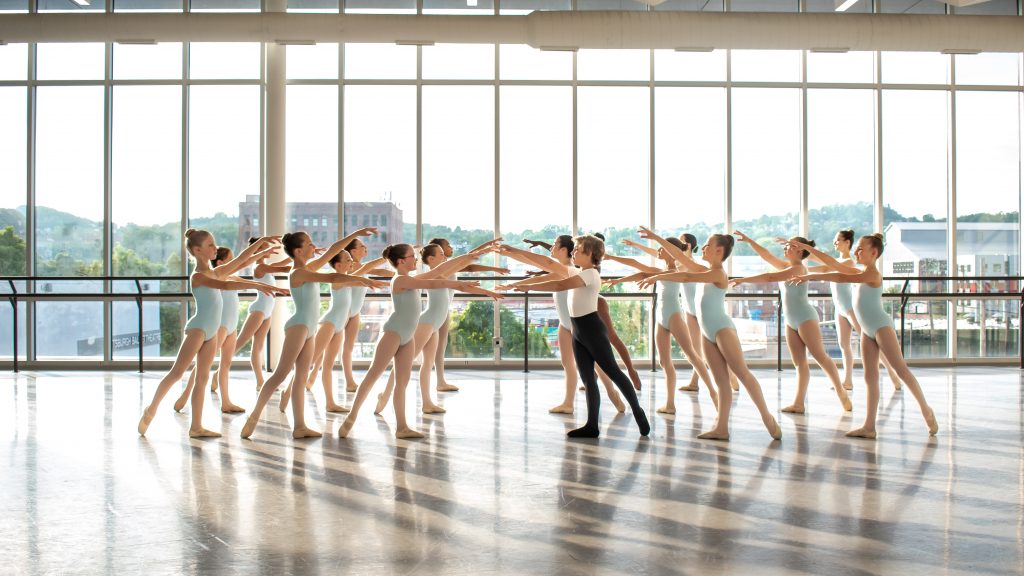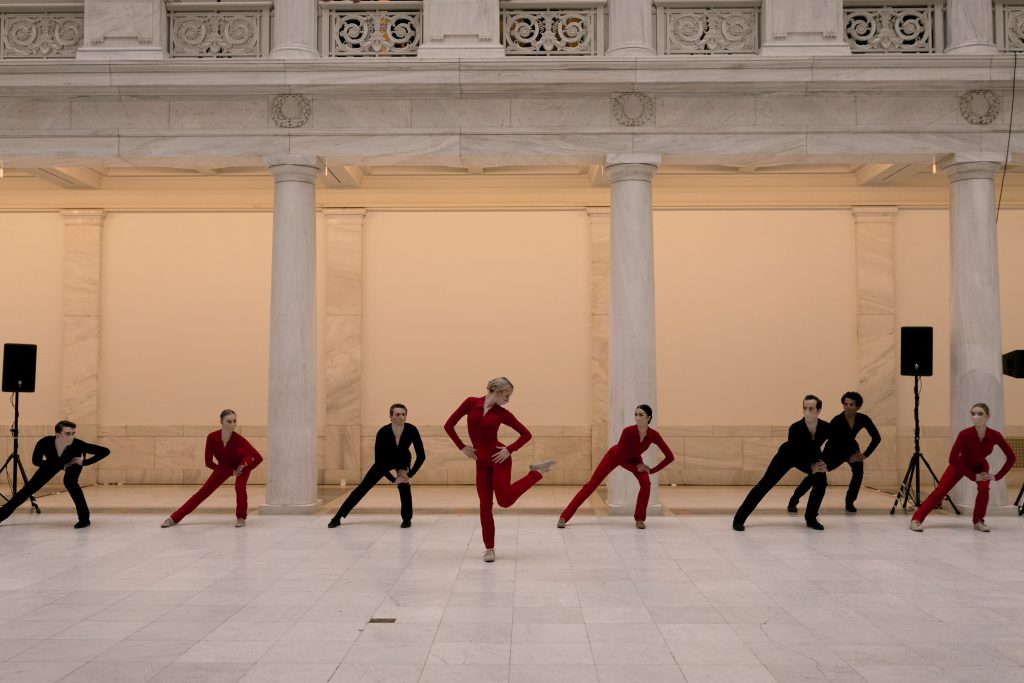PBT’s IDEA Strategic Plan
Pittsburgh Ballet Theatre aspires as an organization to reflect the diversity of the Pittsburgh region. We seek to create opportunities for internal collaboration and to develop communication processes that foster a safe and inclusive environment. PBT works to attract and retain top talent across all departments.
Focusing on the overarching priority areas of inclusivity, diversity, equity and accessibility, PBT sets the following strategic goals:
Goal1: Improve recruitment, hiring and retention to reflect Pittsburgh’s diverse networks.
PBT will support the region’s progress toward livability and equity via recruitment, hiring and retention processes that result in a professional company and administrative team that reflects the diversity of Allegheny County.
Benchmarks/measures:
- Retention rate of diverse team members is approximately equal to retention rate of majority group(s)
- IDEA training is part of overall learning and professional development strategy
- Contracts and policies do not include gendered language
- PBT’s compensation practices are equitable and transparent, which is reflected internally and externally
- Internal surveys indicate year-over-year improvement of PBT’s commitment to IDEA
Tactics:
- Define what we mean when we say “Pittsburgh’s diverse networks” (e.g., Allegheny County) in various contexts
- Actively recruit and develop racially diverse teams across the organization
- Conduct analyses of benefits and pay
- Identify ways to improve workforce planning so that we are less inclined to draw from personal networks out of need to fill positions quickly
- Build onboarding process that feels inclusive to new team members
- Redefine language used to be accessible and inclusive
- Leverage board relationships to expand outreach and networks
Goal 2: Develop IDEA aims in PBT School, including deepened relationships with Education community partners.
PBT School seeks to welcome students of all levels, interests and backgrounds, to foster an equitable and inclusive environment, and to focus on the dancer as a whole person, nurturing them into creative, confident and well-rounded individuals.
Benchmarks/measures:
- Increased enrollment in School of children from diverse racial backgrounds (including ISP and school-year programs)
- Improved retention of students of color
- Improved retention rate of Community Youth Scholarship students
- Increased number of IDEA training opportunities for School students, faculty and leadership
- Implementation of inclusive policies to create a safe and supportive environment for students and families
Tactics:
- Edit School handbook policies to provide a more inclusive experience for students and families
- Collect enhanced demographic information from families joining the School
- Implement trainings on IDEA topics for School students and families
- Implement exit interview strategy for families leaving the School (Children’s Division through graduate program)
- Create policies and procedures that focus on gender inclusivity in all School programming
- Re-organize Community Youth Scholarship (CYS) program to better support students and track CYS pipeline
- Work with School committee members and students to implement IDEA efforts

Goal 3: Build out structure for budgeting and financial accountability around IDEA goals.
PBT will prioritize IDEA across the organization and will demonstrate this commitment through its financial activities, including account of IDEA-related expenditures and use of PBT’s diverse supplier resources.
Benchmarks/measures:
- Increased use of diverse supplier resource list by team leaders
- Inclusion of IDEA line items and increased funds for items earmarked as such, in departmental and overall PBT budget
- Discussion at executive/finance committee meetings of annual budget to include line items for costs related to IDEA expenditures
Tactics:
- Increase accountability for department leaders around use of diverse supplier resource
- Require annual accounting of IDEA expenses for all departments
- Request budget plans to include expenditures related to IDEA
- Discussion of IDEA training and expenditures at the leadership level on an annual basis
- Identification of operational expenditures that could be switched to suppliers on diverse supplier resource list
Goal 4: Commit to community development around IDEA learning through ongoing training opportunities.
PBT seeks to grow as individuals and as an organization through continued training on IDEA topics across all four areas. An educational commitment to IDEA initiatives will continue in 2022-25, with both internal and external components.
Benchmarks/measures:
- At least two trainings will be held for the entire organization each year
- Offer monthly coffee chats and other opportunities for ongoing discussion
- Bring in consultant on TBD topics once yearly
- Commence board training opportunities around IDEA topics in parallel with organizational offerings
Tactics:
- Commit to training calendar for artistic and administrative teams
- Select topics for ongoing training and community learning
- Create intentionally inclusive programming options

Goal 5: Develop theater audience and donor bases reflective of Pittsburgh’s diverse communities.
PBT offers Pittsburgh’s diverse communities unique and exhilarating ballet experiences for all ages and abilities. We are constantly striving to improve and deepen relationships with our patrons, students, donors and stakeholders, and to develop audiences representative of the communities we serve.
Benchmarks/measures:
- Increased single ticket sales across performances, including first-time buyers and out-of-market buyers
- Higher number of donors in categories including young professionals and high-worth individuals in the Pittsburgh region
- Improved diversity of audience demographics as measured by feedback surveys
- Increased conversion of School families and community partners to ticket-buyers and subscribers
Tactics:
- Increase accessible program offerings across classes and performances
- Maintain audiences that reflect the diversity of Pittsburgh’s communities
- Continue to identify organizational partners to promote PBT’s IDEA goals in communities
- Increased outreach to ticketing partners through corporate sponsorships
- Develop creative marketing strategies for individual productions and seasons
- Work with board members to discuss potential strategies
Goal 6: Continue PBT’s work as an industry leader in accessibility.
PBT continues to be a key regional partner in accessible programming efforts, for PBT-specific programs and collaborative events. Focus areas in the coming season include continued program expansion (e.g., updated sensory-friendly program guides) as well as improved internal accessibility (e.g., PBT’s website)
Benchmarks/measures:
- Increased funding from accessibility-related donors/partner organizations
- Higher enrollment in accessible program offerings
- Improved accessibility of PBT website and digital materials
- Additional The Nutcracker performances offered as relaxed
Tactics:
- Continue partnerships with accessibility cohort members
- Build out theater accessibility options (e.g., relaxed performances)
- Seek additional funding from relevant sources
- Update PBT’s digital materials to be more accessible

Goal 7: Build out IDEA efforts across the artistic team.
PBT seeks to explore how ballet may evolve to celebrate diversity through the promotion of diverse voices and cultures, particularly through increased representation onstage and in studios.
Benchmarks/measures:
- Increased diversity of choreographers and repetiteurs visiting PBT
- Increased diversity of Company dancers, including apprentices
- Increased IDEA training opportunities for artistic team
- Presentation of story-length and mixed repertory productions that represent diverse perspectives and lived experiences
Tactics:
- Diversify recruitment efforts for Company dancers, including apprentices
- Advance planning to create seasons and programs representative of diverse experiences and stories
- Build network of professional relationships with creatives exploring ballet’s diversity through full-length and mixed repertory pieces
